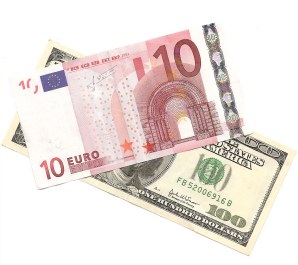|
|
Information Versus Persuasion of the Buyer
 It may be argued that market agencies have no responsibility for giving information to the buyer, that they need only present the goods for inspection or trial. The situation in which this places the consumer-buyer is not evident until the weaknesses and difficulties of small-scale, non-specialized buying are examined. But aside from that it may be argued that the giving of information in the amount and of the kinds needed is a legitimate function of the market. Those who produce goods are presumably in a better position to describe them than any one else and the cost of this service is one for which consumers should be most willing to pay.
Unfortunately the persuasion rather than the information of the buyer has been the aim of those who sell. This is not strange; competition and production for profit make it the first responsibility of every producer to push his wares and to enlarge his sales by increasing the demand for his product. Salesmanship means persuasion by direct or indirect means. As practiced it ranges from a skilled art acquired by experience to a carefully worked-out attempt to apply the "laws" of human behavior. Information-giving has been subordinated to persuasion. Information has been given or withheld as seemed best and, when given, given to that degree that would promote the sale of the product.
Efforts and devices to induce the consumer to buy are a necessary concomitant of competition; but that they are a dis-service to the consumer in numerous instances is beyond question. Under our economic system practically any good or service may be produced and offered for sale. But should those financially interested promote their sale other than by display and information? Their interest lies in making the sale, and it is only as the dis-serviceability or unsuitability of the product, or deception concerning it, in the long run affects profits that it can be considered. If all mistakes in selection were revealed through the use of the product and the buyers could avoid future purchases of similar goods objectionable selling practices would lessen; but unfortunately this is not the situation. An almost equally grave objection to persuasion as a part of selling activity is that the technique is largely of a character that increases impulsive, unconsidered buying. The consumers' points of least resistance are carefully studied; psychologists set forth the approaches, the feints, the strategic moments that will bring favorable action. In the literature of salesmanship the consumer appears as the object of a campaign of solicitation and pursuit, the strategy and tactics of which are planned by experienced veterans aided by experts at every point where specialized knowledge would be useful.
One of the buyers' problems therefore is how to meet the difficulties created by the attempts of sellers to persuade them to buy. The very alertness, initiative and eagerness that lead to the present wide range of choice, the time- and energy-saving devices, lead also to the well-nigh overwhelming activities to bring about sales, activities that may be of no value to the buyer and but serve to make her buying a less considered and intelligent process. The efforts of one seller moreover to a degree nullify those of another with resulting waste of time and resources. The consumer can not eat more of all foods or use more of all other goods since time and energy as well as purchasing power are limited.
The problem of those who would improve buying is then in part how to make consumer-buyers conscious of their position, acquaint them with the tactics of the besiegers, enable them to recognize each move in the game however camouflaged, in short to strengthen their sales resistance. The second part of the problem is how to increase information-giving in the market and reduce persuasion. The first step toward that end is to secure general acceptance of the fact that one criterion of a good market is "no pressure to buy." The present market comes far from meeting this test.
|
|
This website is created and designed by Atlantis International, 2006
This is an unofficial website with educational purpose. All pictures, and trademarks are the property of their respective owners and may not be reproduced for any reason whatsoever. If proper notation of owned material is not given please notify us so we can make adjustments. No copyright infringement is intended.